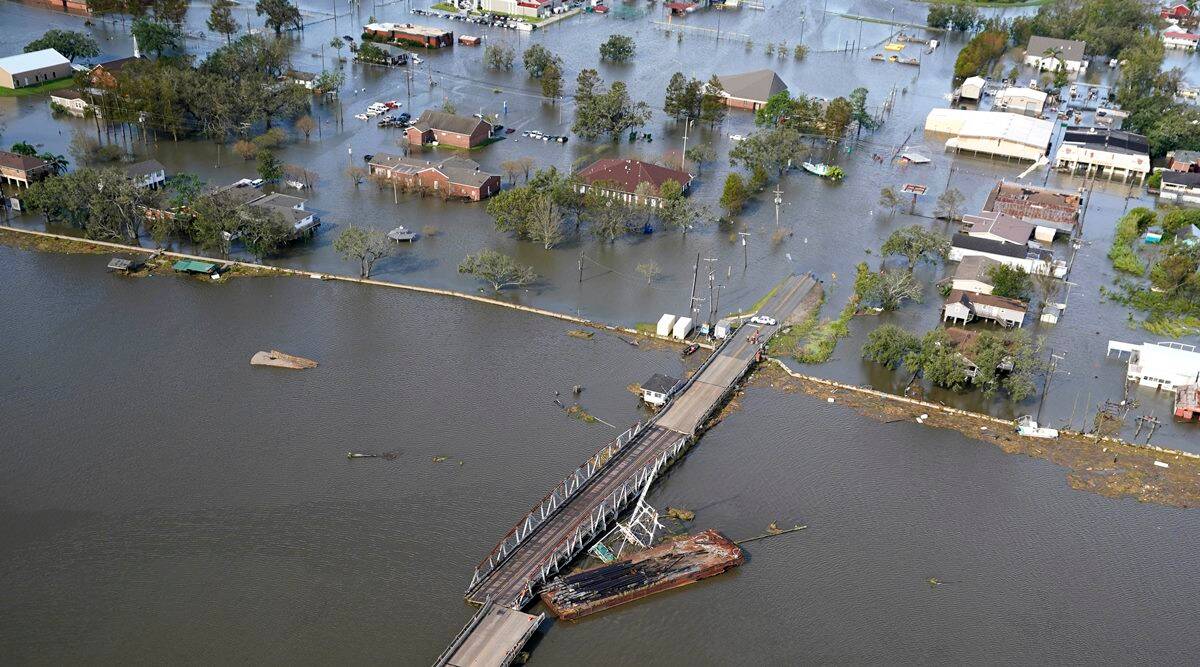
On August 29, Hurricane Ida came and went through the U.S. Gulf Coast rather quickly, but unfortunately, the impacts felt will be long-lasting. Major weather events like this one are becoming more common and more severe, which many scientists attribute directly to climate change. Even if individual storms like Hurricane Ida cannot be identified as directly an outcome of the changing climate, the messages it sends to the energy sector remains chillingly clear:
As the U.S. Gulf Coast region continues to pick up the pieces from yet another devastating hurricane, a few early observations related to these messages have become clear and deserve attention and consideration.
Taking stock of the damage from Hurricane Ida is critical towards understanding just how impactful the storm was on energy systems in the region. All 8 transmission lines that feed power into New Orleans, Louisiana’s most populous city, were knocked out. This damage included the upending of a 400-foot tower, a challenge that alone adds much complexity and delay before Entergy (the regional power provider) can restore power.
As of Tuesday morning, those outages remained for more than 1 million customers in Louisiana and Mississippi. Troublingly, these outages don’t amount to simple fixes. Rather, 10 parishes across the state have seen their electric grids “completely collapsed and damaged, smashed out.” As a result, the utility companies note that areas of the grid most directly hit could take three weeks for restoration.
The power sector isn’t the only energy source impacted, either. The oil and gas industry that makes up such a prevalent part of the Gulf Coast Region has also come to a stop in the wake of Hurricane Ida. All told, the capacity for refining crude oil into usable products knocked out in Louisiana and Mississippi make up 13% of the nation’s total capacity. As a result, prices of gasoline and other oil products will see notable spikes as an impact of these shut-ins.

The fallout in the U.S. Gulf Coast is hardly the first time that a major storm has left such a wake of damage to the grid in its pathway:
Further, these events are not one-off incidents that can easily or readily be ignored. They represent a pattern of storms and weather events with increasing frequency and intensity. Whether specific entities want to debate the climate change impact causing them or not, the reality of the storms cannot be ignored. That’s why grid modernization is becoming such a touchpoint. Grid modernization considerations to prepare the grid include the following:
In the end, tackling grid reliability and stability in the face of extreme weather is a collaborative requirement across energy providers. From the climate perspective, the negative impacts hit everyone so it’s incumbent on all actors to assume their role. No utility or energy company operates in a silo. The rush to decarbonize the grid and stop contributing to climate change is the responsibility of each utility, and the faster that happens collectively, the less the climate will change.
Further, sharing and collaborating on technologies that work to decarbonize, increase resilience, and more is important in the utility sector. No power providers will come up with all the solutions on their own, but the more that lessons are shared and technology is collaborated upon, the quicker the industry will get to solutions.
Lastly, and most importantly, a storm like this can evoke the famous Mr. Rogers quote:
“When I was a boy and I would see scary things in the news, my mother would say to me, "Look for the helpers. You will always find people who are helping.”
In the wake of this major storm, as happens any time there is a mass outage, you’ll see dozens of utilities sending hundreds, sometimes thousands, of utility workers to the impacted region to help them restore power lines and bring energy back to their customers. These programs are known as mutual aid, with utilities sending their resources and workers, knowing fully well that other utilities will do the same when the roles are reversed. Like firefighters, they aren’t running from the issues but they are running to it, and that’s truly special about the power industry. In response to Hurricane Idea, more than 25,000 workers from 32 states and the District of Columbia have all made their way to help their utility peers, which is always an inspiring sight.
Energy is critical for daily life. Reliable power is no luxury: it keeps food safe, medicines preserved, life-saving equipment running, and more. So, outages aren’t just an inconvenience and reliability isn’t just nice to have, but they are essential to a safe, healthy, and modern life. That’s why these storms and their wide impacts can be such a wake-up call. But from that wake-up call, let’s remember what’s important, what our priorities as energy consumers and stakeholders should be, and keep that spirit of collaboration moving forward.